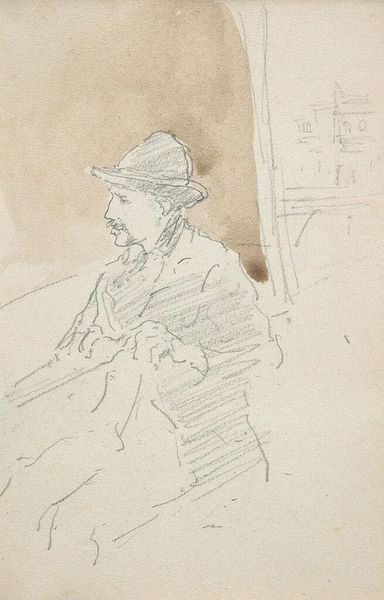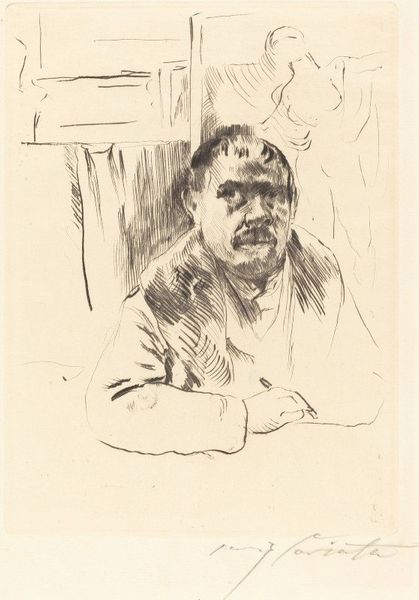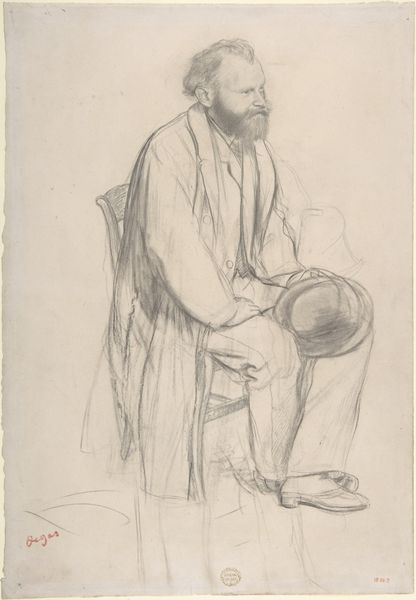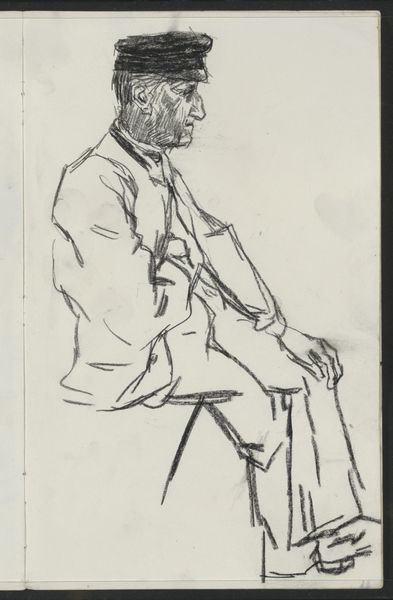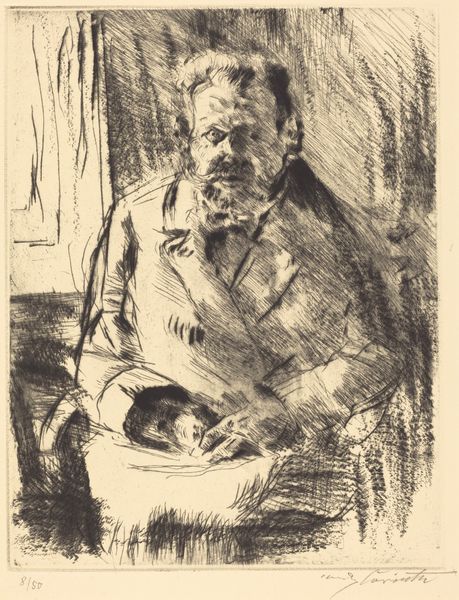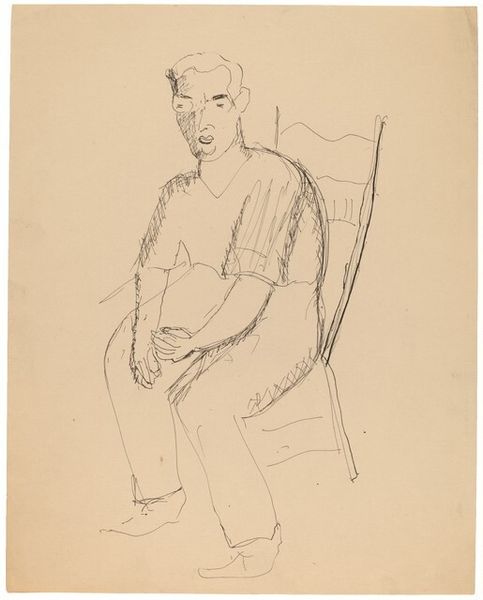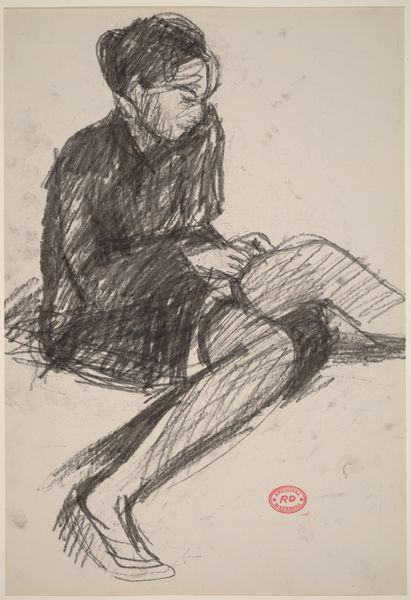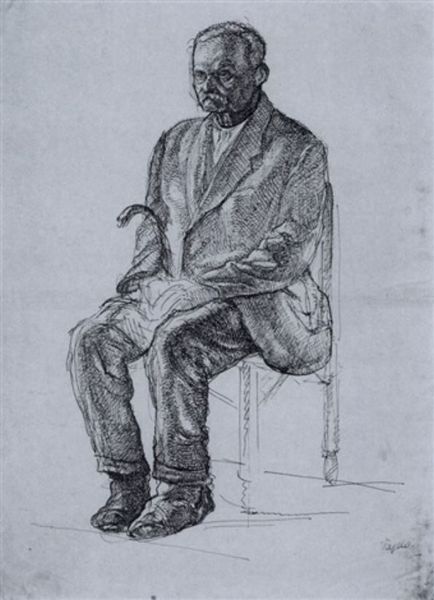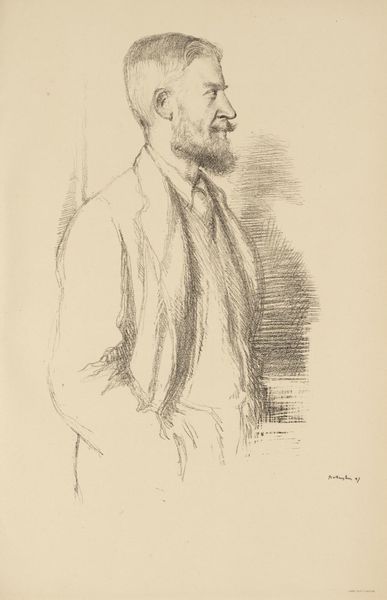
Copyright: Public domain
Editor: We’re looking at “Baron,” a pencil drawing from 1896 by Henri de Toulouse-Lautrec, currently housed at the Brooklyn Museum. It's a quick sketch, all in pencil, giving the sitter a relaxed, informal feel. What do you see in this piece? Curator: Notice how Lautrec captures the essence of the sitter through line alone. The density of the pencil marks varies to suggest volume and shadow. Observe the strategic use of hatching – parallel lines – particularly around the face and the Baron’s hat. This imbues depth, wouldn't you agree? Editor: Absolutely! It's almost like he’s sculpting with lines. The way he’s indicated the hands, for instance, they're far less defined than the face, giving the drawing a sense of immediacy. Curator: Precisely. Consider also the composition: the sitter is framed, cropped almost, implying a larger context beyond the page. What does the relationship of line quality suggest about the artist’s priorities, the interplay between detail and suggestion? Editor: I guess Lautrec was more interested in capturing a feeling, an impression, than photographic realism. He's playing with implied forms. Curator: Exactly. It encourages the viewer's active engagement, a filling-in of the gaps that, arguably, provides the image its enduring energy. It reveals Lautrec’s method, which emphasizes suggestion over literal representation. Editor: So it’s the bare bones, structurally speaking. The minimum needed to convey form. Thanks, that really gives me a new appreciation for what makes it so captivating. Curator: And consider that our interpretive act participates with Lautrec’s intentional compositional decisions. This, in its way, gives meaning to the structural qualities within the piece itself.
Comments
No comments
Be the first to comment and join the conversation on the ultimate creative platform.


